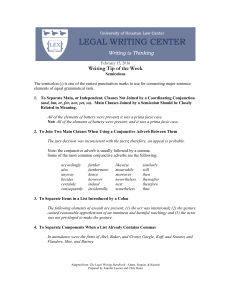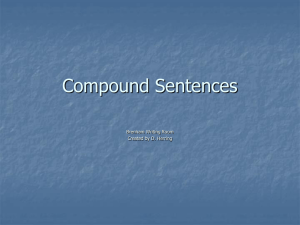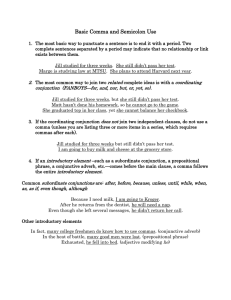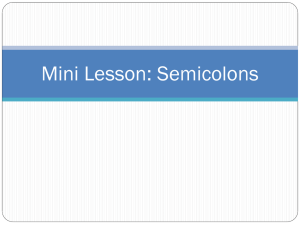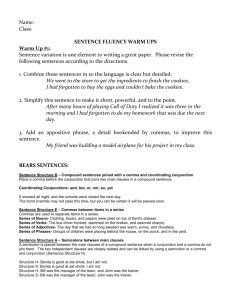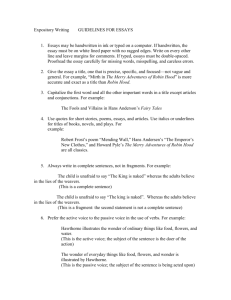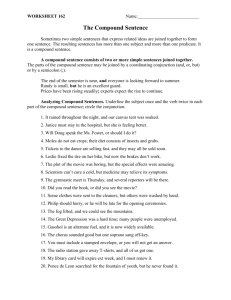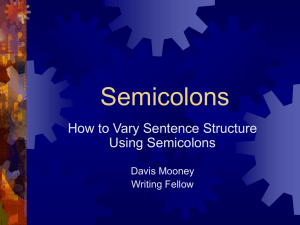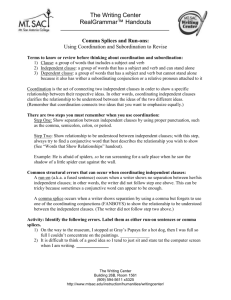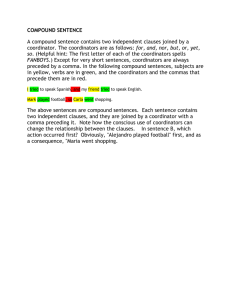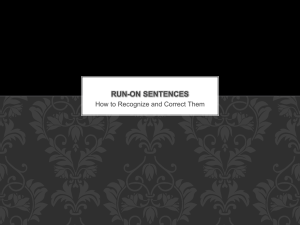Compound Sentences: Grammar Handout with Conjunctions & Semicolons
advertisement
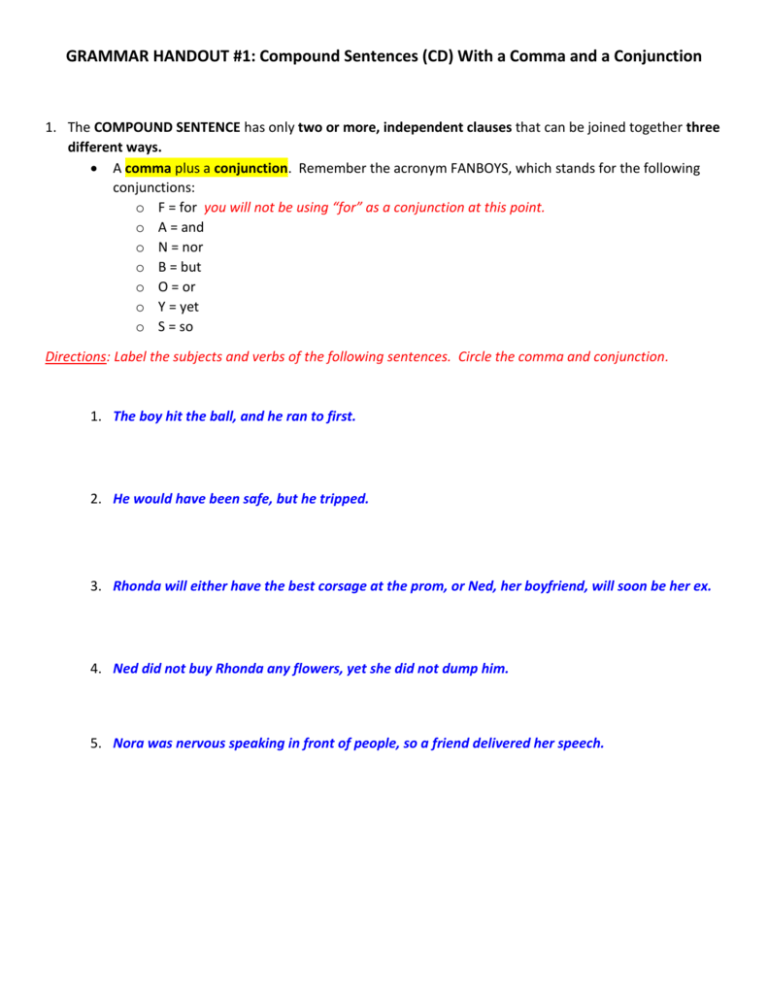
GRAMMAR HANDOUT #1: Compound Sentences (CD) With a Comma and a Conjunction 1. The COMPOUND SENTENCE has only two or more, independent clauses that can be joined together three different ways. A comma plus a conjunction. Remember the acronym FANBOYS, which stands for the following conjunctions: o F = for you will not be using “for” as a conjunction at this point. o A = and o N = nor o B = but o O = or o Y = yet o S = so Directions: Label the subjects and verbs of the following sentences. Circle the comma and conjunction. 1. The boy hit the ball, and he ran to first. 2. He would have been safe, but he tripped. 3. Rhonda will either have the best corsage at the prom, or Ned, her boyfriend, will soon be her ex. 4. Ned did not buy Rhonda any flowers, yet she did not dump him. 5. Nora was nervous speaking in front of people, so a friend delivered her speech. GRAMMAR HANDOUT #2: COMPOUND SENTENCES WITH A SEMICOLON A semicolon can also join two independent clauses together. o Sean does not believe in ghosts; his house is grand central station for poltergeists! Directions: Combine the following sentences, using either a semicolon or a comma and a conjunction. Also, don’t forget to mark the subjects and the verbs. Raul dribbled the ball down the court. He made the shot from the three-point area. With the wind in her hair, Sarah walked down the street. She met a friend at the corner. She waived franticly at the taxi. It did not stop to pick her up. Infinitive Christina’s long-time boyfriend took up with another girl. She decided [to take up] with the school quarterback. GRAMMAR HANDOUT #3: The Conjunctive Adverb The most complicated way to join two, independent clauses is the following: Sean does not believe in ghosts; however, they do believe in him. Raul studied hard for the test; nevertheless, he did poorly. George studies for the test; consequently, he did well. Recognize a conjunctive adverb when you see one. accordingly also besides consequently conversely finally furthermore hence however indeed instead likewise meanwhile moreover nevertheless next nonetheless otherwise similarly still subsequently then therefore thus Conjunctions have one job, to connect. They join words, phrases, or clauses together to clarify what the writer is saying. Their presence provides smooth transitions from one idea to another. When the job of an adverb is to connect ideas, we call it a conjunctive adverb. A conjunctive adverb can join two main clauses. In this situation, the conjunctive adverb behaves like a coordinating conjunction, connecting two complete ideas. Notice, however, that you need a semicolon, not a comma, to connect the two clauses: MAIN CLAUSE + ; + conjunctive adverb + , + MAIN CLAUSE . EXAMPLES The dark skies and distant thunder dissuaded Clarice from her afternoon run; moreover, she had thirty calculus problems to solve for her morning class. Leon's apartment complex does not allow dogs over thirty pounds; otherwise, he would have bought the gangly Great Dane puppy playing in the pet store window. Directions: Write three compound sentences using different conjunctive adverbs with correct punctuation.
